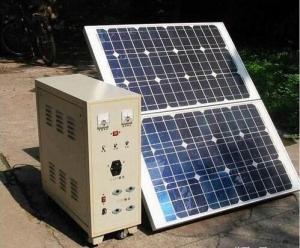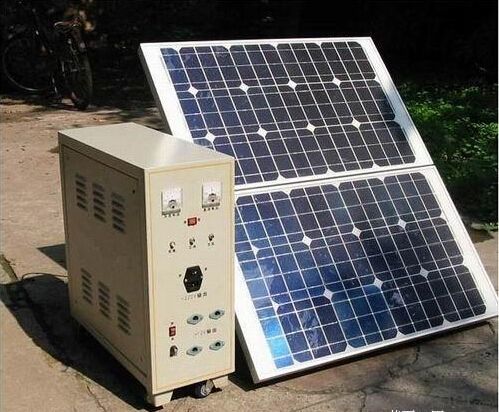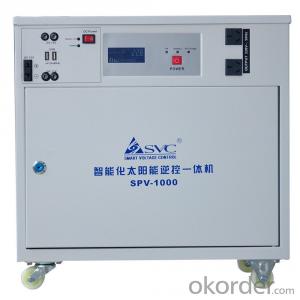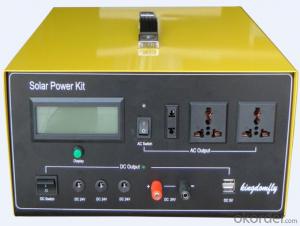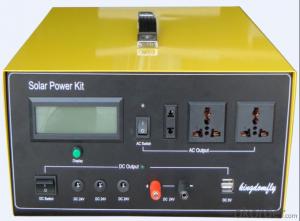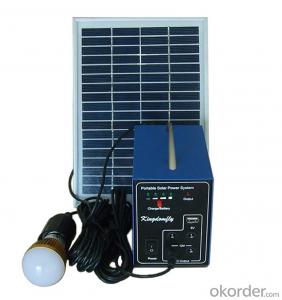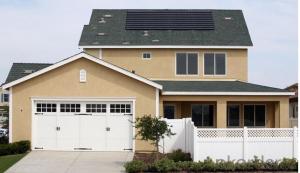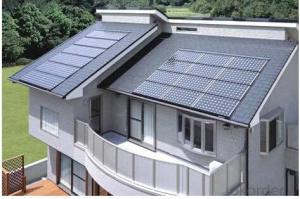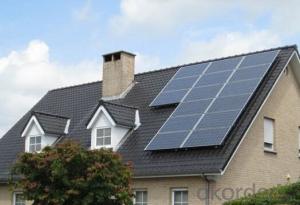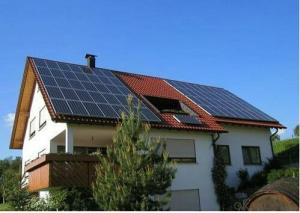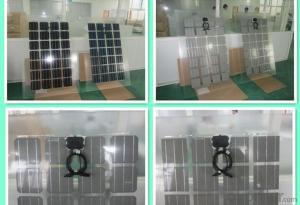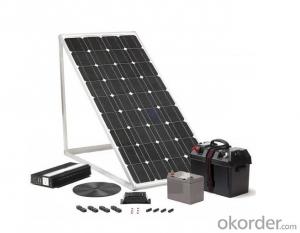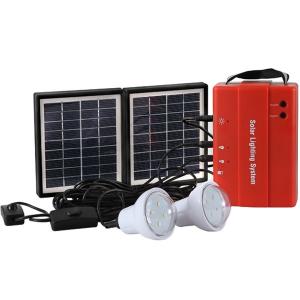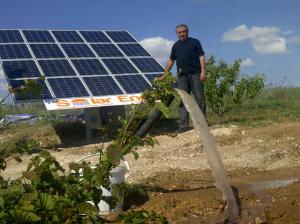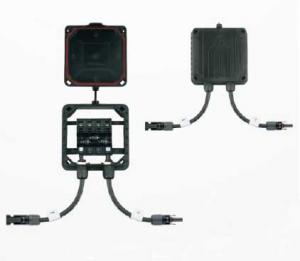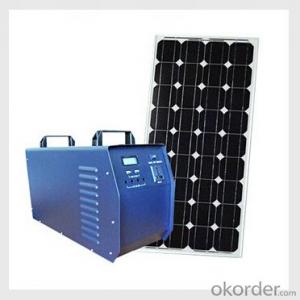Solar Energy Systems Omaha 60W Solar System Made in China
- Loading Port:
- China Main Port
- Payment Terms:
- TT OR LC
- Min Order Qty:
- -
- Supply Capability:
- -
OKorder Service Pledge
Quality Product, Order Online Tracking, Timely Delivery
OKorder Financial Service
Credit Rating, Credit Services, Credit Purchasing
You Might Also Like
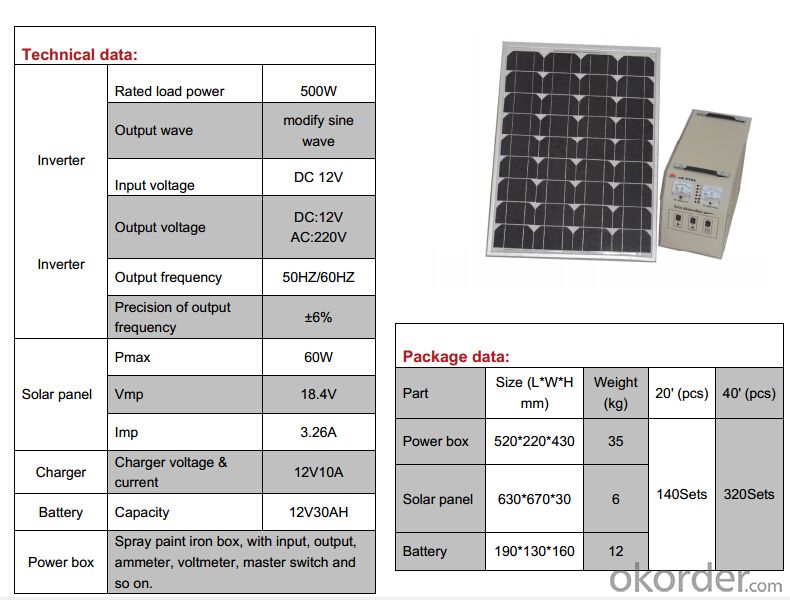
- Q: Can solar energy systems be used in powering agricultural processing facilities?
- Yes, solar energy systems can be used to power agricultural processing facilities. Solar panels can be installed on the rooftops or surrounding land of these facilities to generate electricity. This renewable energy source can provide a reliable and cost-effective solution to meet the power requirements of various agricultural processing operations, such as drying, milling, refrigeration, and packaging. Additionally, solar energy systems can help reduce greenhouse gas emissions and dependence on fossil fuels, making them an environmentally sustainable choice for powering agricultural processing facilities.
- Q: Are there any government incentives or tax credits for installing solar energy systems?
- Yes, there are government incentives and tax credits available for installing solar energy systems. These incentives can vary depending on the country and region, but they often include federal tax credits, grants, rebates, and other financial incentives to encourage the adoption of solar energy. These incentives aim to reduce the upfront costs of installing solar energy systems and make renewable energy more affordable and accessible to individuals and businesses.
- Q: What are the maintenance costs associated with solar energy systems?
- The maintenance costs associated with solar energy systems are generally low compared to other forms of energy generation. Solar panels themselves require very little maintenance as they have no moving parts. However, there are a few key components that may require periodic maintenance or replacement. One of the main maintenance costs is the cleaning of solar panels. Over time, dust, dirt, and debris can accumulate on the surface of the panels, reducing their efficiency. Regular cleaning, typically done with water or a soft brush, helps ensure optimal energy production. Another maintenance cost is the inspection and repair of electrical connections and wiring. These components are essential for converting the sun's energy into usable electricity. Regular inspections can identify any loose connections or damaged wiring that may hinder the system's performance. In addition, inverters, which convert the direct current (DC) generated by the solar panels into alternating current (AC) used in homes and businesses, may need to be replaced after a certain lifespan. Inverter replacement is typically required every 10-15 years, depending on the manufacturer and usage. Overall, the maintenance costs for solar energy systems are relatively minimal compared to the long-term savings and benefits they provide. It is recommended to have a professional solar installer or technician perform regular inspections and maintenance to ensure the system operates efficiently and maximizes its lifespan.
- Q: What is net metering and how does it work with solar energy systems?
- Net metering is a billing arrangement that allows solar energy system owners to receive credit for the excess electricity they generate and feed back into the grid. With net metering, when a solar energy system produces more electricity than is being consumed, the excess energy is sent back to the power grid, and the homeowner or business owner receives a credit on their utility bill. This credit can then be used to offset the cost of electricity when the solar system is not generating enough power, such as during nighttime or cloudy days. Essentially, net metering ensures a fair and efficient exchange of electricity between the solar system owner and the utility company, making solar energy systems more economically viable and accessible.
- Q: How does the efficiency of solar panels vary across different angles of sunlight?
- The efficiency of solar panels can vary across different angles of sunlight due to several factors. One factor is the incident angle of sunlight. Solar panels are most efficient when sunlight strikes them perpendicular to their surface. As the angle of sunlight becomes more oblique, the energy output of the panels decreases. This is because when sunlight strikes the panel at an angle, it has to travel a longer distance through the material, resulting in more absorption and reflection, and less energy conversion. Another factor is the tracking system of solar panels. Some solar panels have tracking systems that allow them to follow the sun's movement throughout the day, optimizing the angle of incidence. These tracking systems can significantly increase the efficiency of solar panels, as they ensure that the panels are always aligned with the sunlight, maximizing the energy output. Furthermore, the efficiency of solar panels can also be affected by the type of solar cell technology used. Different types of solar cells have varying sensitivities to the incident angle of sunlight. For example, monocrystalline silicon solar cells tend to have higher efficiencies at steeper angles of sunlight compared to polycrystalline or thin-film solar cells. In summary, the efficiency of solar panels can vary across different angles of sunlight due to factors such as incident angle, tracking systems, and the type of solar cell technology used. Optimizing the angle of incidence and implementing tracking systems can help maximize the efficiency of solar panels and increase their energy output.
- Q: Can solar energy systems be integrated into building design?
- Yes, solar energy systems can definitely be integrated into building design. In fact, solar panels and other solar technologies are commonly incorporated into the design and construction of modern buildings. This integration allows for the generation of clean and renewable energy on-site and reduces dependence on traditional energy sources. Additionally, integrating solar energy systems into building design can help reduce greenhouse gas emissions and contribute to a more sustainable and environmentally friendly future.
- Q: Can solar energy systems be installed on all types of roofs?
- Yes, solar energy systems can be installed on most types of roofs, including flat roofs, sloped roofs, and even curved roofs. However, the suitability of installation may vary depending on factors such as the roof's orientation, angle, shading, and structural integrity. It's important to consult with a professional solar installer to assess the compatibility of a specific roof for solar panel installation.
- Q: How do solar energy systems contribute to reducing reliance on fossil fuels?
- Solar energy systems contribute to reducing reliance on fossil fuels by harnessing the power of the sun to generate electricity. Unlike fossil fuels, solar energy is a renewable resource that does not deplete over time. By utilizing solar panels to capture sunlight and convert it into usable energy, we can reduce the need for burning fossil fuels, which are not only finite but also contribute to air pollution and climate change. Switching to solar energy systems helps to decrease carbon emissions, mitigate the harmful effects of fossil fuel extraction and combustion, and promote a sustainable and cleaner energy future.
- Q: Can solar energy systems be installed on flat roofs?
- Yes, solar energy systems can be installed on flat roofs. However, the installation process and design considerations may be different compared to pitched or sloped roofs.
- Q: How do solar energy systems impact the grid?
- Solar energy systems have a positive impact on the grid by reducing the overall demand for electricity from traditional sources. They generate clean and renewable energy, which can be fed back into the grid, reducing the reliance on fossil fuel-based power plants. This helps in reducing greenhouse gas emissions and promoting a more sustainable energy mix. However, the intermittent nature of solar power can create challenges for grid operators in managing fluctuations in supply and demand, requiring efficient grid management and energy storage solutions.
Send your message to us
Solar Energy Systems Omaha 60W Solar System Made in China
- Loading Port:
- China Main Port
- Payment Terms:
- TT OR LC
- Min Order Qty:
- -
- Supply Capability:
- -
OKorder Service Pledge
Quality Product, Order Online Tracking, Timely Delivery
OKorder Financial Service
Credit Rating, Credit Services, Credit Purchasing
Similar products
Hot products
Hot Searches
Related keywords
